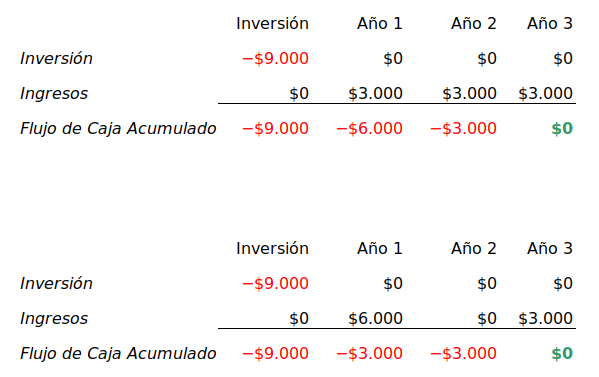How To Buy Cheap Stuff That Doesn't Suck: A Practical Guide

Table of Contents
Mastering the Art of Online Research
Before you even click "add to cart," thorough online research is your secret weapon in the quest for inexpensive but quality products. This isn't about settling for the first result; it's about digging deep to find the best value for your money.
Checking Reviews and Ratings
Reading reviews isn't just about seeing a sea of stars; it's about discerning the truth. Don't rely solely on Amazon ratings. Look at reviews across multiple platforms, including independent blogs and specialized review sites.
- Websites to check: ReviewMeta (to identify potentially fake reviews), independent blogs focused on product reviews, and the retailer's own website.
- Types of reviews to prioritize: Detailed reviews that go beyond a simple "great product!" Look for reviews with photos or videos showcasing the product's quality.
- Red flags to watch out for: An overwhelming number of 5-star reviews with similar wording (a sign of potentially fake reviews). Also, be wary of reviews that focus only on the positives and ignore potential flaws.
Comparing Prices and Features
Finding the lowest price isn't always the best strategy. You need to compare prices and features to get the best value. Use price comparison websites to see what's available and how prices vary.
- Price comparison websites: Google Shopping, PriceGrabber, and similar tools can save you time and money.
- Features to prioritize: Focus on the features you actually need. Don't pay extra for bells and whistles you won't use.
- Understanding hidden costs: Always factor in shipping costs, taxes, and any potential additional fees before making a decision. Read product specifications carefully to avoid unpleasant surprises.
Identifying Reputable Online Retailers
Choosing a trustworthy retailer is crucial for a positive buying experience, particularly when buying cheap stuff. A good return policy is a must-have.
- Trust indicators: Look for secure payment gateways (HTTPS), readily available customer service contact information, and overwhelmingly positive online reviews about the retailer itself.
- Avoiding suspicious websites: Beware of sites with poor grammar, missing contact information, or overly aggressive advertising. Stick to well-known and established retailers whenever possible.
The Power of Sales, Coupons, and Deals
Saving money is often about timing and strategy. Learning to use sales, coupons, and deals effectively can significantly reduce the cost of your purchases.
Utilizing Coupon Websites and Apps
Coupon websites and apps are treasure troves of discounts. Don't underestimate their power.
- Coupon websites and apps: RetailMeNot, Groupon, Honey, and many others offer a wide array of discounts.
- Strategies for finding specific coupon codes: Use specific keywords when searching for deals. Many websites also allow you to filter by retailer or product category.
- Understanding expiration dates and stacking deals: Always check the expiration dates of coupons and see if you can stack them to maximize your savings.
Timing Your Purchases Strategically
Major sales events are prime opportunities to find cheap stuff that doesn't suck. Plan your purchases around these events.
- Specific events to look out for: Black Friday, Cyber Monday, end-of-season sales, and other retailer-specific sales events.
- Timing purchases to maximize savings: Research when retailers typically have sales on the products you're looking for.
Negotiating Prices
Don't be afraid to negotiate, especially for larger purchases made offline. A little polite negotiation can go a long way.
- Strategies for polite negotiation: Be respectful, explain your budget constraints, and be prepared to walk away if the seller isn't willing to negotiate.
- Acceptable reasons for asking for a lower price: Buying in bulk, finding a lower price elsewhere, or pointing out minor imperfections in the item.
Exploring Alternative Shopping Avenues
Sometimes, the best deals are found outside the mainstream. Consider these alternative shopping avenues for amazing affordable finds.
The Value of Secondhand and Used Goods
Buying used or refurbished items can dramatically reduce your costs, especially for electronics and other durable goods.
- Platforms for buying used goods: eBay, Facebook Marketplace, Craigslist, consignment shops, and local thrift stores.
- Tips for inspecting used items before purchase: Thoroughly inspect the item for any damage or defects before you commit to buying it. Ask questions about its history.
- Negotiating prices for used items: Used items often have some wiggle room in their pricing. Don't be afraid to negotiate.
Utilizing Subscription Boxes and Membership Programs
Subscription boxes and membership programs can offer cost savings, but only if chosen carefully.
- Examples of successful subscription models: Consider subscription boxes that align with your specific needs and preferences, avoiding impulse purchases.
- Understanding terms and conditions: Carefully review the terms and conditions of any subscription or membership program before signing up.
- Avoiding impulse buys: Subscription boxes can lead to impulse buying. Only subscribe if you are confident you'll use the products regularly.
Borrowing or Renting Instead of Buying
For items you only need occasionally, borrowing or renting might be the most cost-effective option.
- Online platforms and local resources to borrow or rent items: Consider online platforms like Neighbor or local tool libraries for borrowing tools or equipment.
Conclusion
Finding cheap stuff that doesn't suck is entirely achievable with the right approach. By mastering online research, leveraging sales and coupons, and exploring alternative shopping methods, you can significantly improve your purchasing power. Remember, finding value isn't about compromising on quality; it's about employing smart shopping strategies to maximize your budget. Start applying these strategies today and experience the joy of finding affordable finds that meet your needs! Master the art of buying cheap stuff that doesn't suck!

Featured Posts
-
 Phoi Canh Cong Vien Dien Anh Thu Thiem De Xuat Moi Nhat
May 17, 2025
Phoi Canh Cong Vien Dien Anh Thu Thiem De Xuat Moi Nhat
May 17, 2025 -
 Valerio Therapeutics S A Postponement Of 2024 Financial Report And Statement Approval
May 17, 2025
Valerio Therapeutics S A Postponement Of 2024 Financial Report And Statement Approval
May 17, 2025 -
 Descongelaran Cuentas De Koriun Recuperacion Del Capital Para Inversionistas
May 17, 2025
Descongelaran Cuentas De Koriun Recuperacion Del Capital Para Inversionistas
May 17, 2025 -
 Anunoby Brilla Con 27 Puntos En Victoria De Knicks Sobre 76ers
May 17, 2025
Anunoby Brilla Con 27 Puntos En Victoria De Knicks Sobre 76ers
May 17, 2025 -
 Rogue One Prequel Andor Cast Reveals Final Season Details In Bts Look
May 17, 2025
Rogue One Prequel Andor Cast Reveals Final Season Details In Bts Look
May 17, 2025
